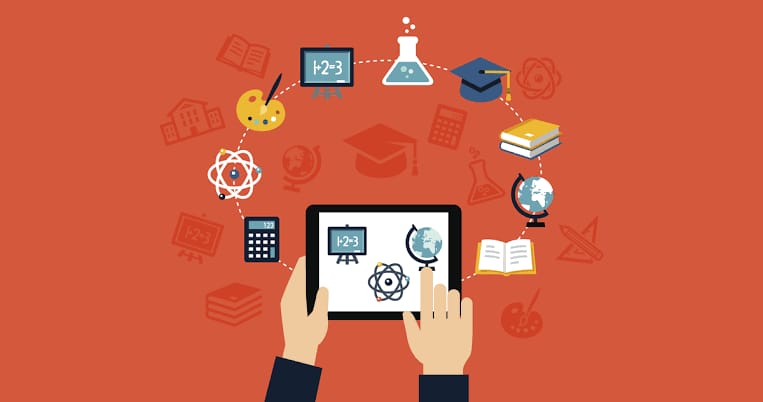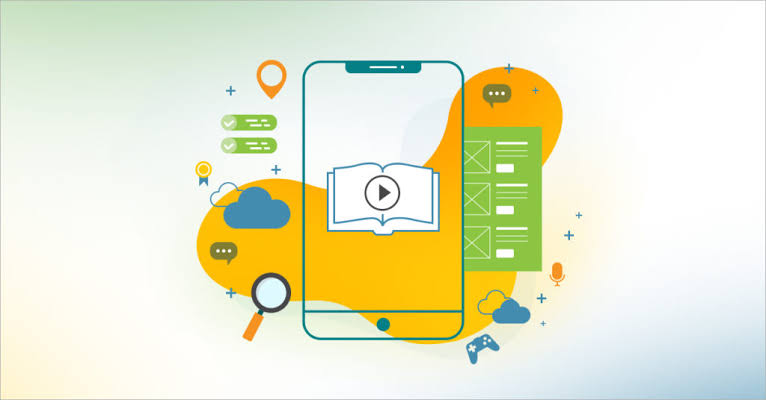
Use of Big Data to Analyze Student Performance and Learning Gaps
Big Data is revolutionizing education by providing deep insights into student performance and learning gaps. Through analyzing vast data from assessments, attendance, and online interactions, educators can identify where students struggle and tailor personalized learning experiences. Predictive analytics enable early intervention to improve outcomes and reduce dropout rates.
✨ Raghav Jain

Introduction
In recent years, the education sector has witnessed a remarkable transformation fueled by technological advancements and data-driven decision-making. Among these innovations, big data stands out as a powerful tool to revolutionize how educators understand and improve student learning. The use of big data to analyze student performance and identify learning gaps has become increasingly prevalent, helping teachers, administrators, and policymakers make more informed, personalized, and effective educational decisions.
Big data, characterized by its vast volume, velocity, and variety, offers unprecedented opportunities to capture detailed insights about students’ academic progress, engagement, and challenges. By analyzing these extensive datasets, educators can detect patterns that traditional assessment methods might miss, enabling timely interventions and targeted support.
This article explores how big data is being used to analyze student performance and learning gaps, the benefits and challenges involved, and its potential to shape the future of education. In the rapidly evolving landscape of modern education, the ubiquitous presence of digital learning platforms, online assessments, and integrated student information systems has inadvertently spawned an unprecedented wealth of Big Data, a veritable goldmine of information that holds immense potential to revolutionize how we understand, analyze, and ultimately enhance student performance and address critical learning gaps. This voluminous, varied, and velocity-driven data, far exceeding the capabilities of traditional data processing applications, encompasses every conceivable interaction a student has within the educational ecosystem: from their clickstream patterns on online courses and the time spent on specific assignments to their performance on quizzes, participation in discussions, engagement with multimedia resources, and even their emotional responses captured through sentiment analysis in written submissions. The sheer scale and granularity of this data present a transformative opportunity for educators, administrators, and policymakers to move beyond anecdotal evidence and aggregate statistics, delving instead into highly individualized insights that were once unimaginable. By applying sophisticated Big Data analytics techniques, including machine learning, artificial intelligence, and statistical modeling, educational institutions can uncover hidden patterns, predict future outcomes, and identify causal relationships that profoundly influence student success and highlight areas where intervention is most needed. This paradigm shift from reactive, summative assessment to proactive, formative data-driven decision-making represents a pivotal moment in the quest to personalize learning and foster more equitable educational outcomes.
The initial phase of leveraging Big Data for student performance analysis involves the meticulous collection and aggregation of diverse data streams from various sources. This often includes Learning Management Systems (LMS) like Moodle or Canvas, Student Information Systems (SIS) such as Banner or PeopleSoft, online tutoring platforms, digital textbooks, assessment tools, and even social media interactions related to learning. The data can be structured (e.g., grades, attendance records), semi-structured (e.g., discussion forum posts, feedback comments), or unstructured (e.g., student essays, video transcripts). Once collected, the data undergoes rigorous preprocessing, a crucial step that involves cleaning, normalizing, and transforming raw information into a usable format. This includes handling missing values, standardizing formats, and removing irrelevant data points, ensuring the integrity and reliability of subsequent analyses. Without meticulous preprocessing, even the most advanced analytical techniques can yield misleading results. Following this, data warehousing solutions or distributed file systems like Hadoop are often employed to store and manage this massive influx of information, providing a centralized repository for comprehensive analysis.
Once the data is clean and organized, the true power of Big Data analytics comes to the forefront, enabling educators to embark on various levels of inquiry, ranging from descriptive to predictive and prescriptive analytics. Descriptive analytics focuses on understanding "what happened," providing insights into past and current student performance. This can involve visualizing trends in grades over time, identifying popular learning resources, analyzing demographic performance disparities, or mapping out student engagement levels across different modules. For instance, dashboards can display average scores for assignments, completion rates, and the distribution of grades, offering a macroscopic view of student cohorts. Moving beyond simple descriptions, diagnostic analytics aims to unravel "why something happened." This involves drilling down into specific patterns to identify root causes. For example, if a significant number of students struggled with a particular concept, diagnostic analytics might correlate this struggle with specific teaching methods, the difficulty of learning materials, or a lack of prerequisite knowledge, thereby pinpointing the underlying reasons for underperformance.
The most transformative applications of Big Data in education lie in predictive and prescriptive analytics. Predictive analytics seeks to answer "what is likely to happen," employing machine learning algorithms to forecast future student outcomes based on historical and real-time data. This can include predicting students at risk of failing a course, those likely to drop out, or those who might benefit from advanced placement. Algorithms trained on past student behaviors, performance metrics, and engagement patterns can identify early warning signs, allowing educators to intervene proactively before issues escalate. For instance, a system might flag a student who consistently misses deadlines, shows declining engagement with course materials, or performs poorly on early assessments, triggering an alert for an advisor or instructor. This proactive identification of at-risk students allows for timely support, whether through personalized tutoring, academic counseling, or connecting them with relevant support services. Building on predictions, prescriptive analytics delves into "what should be done," recommending specific actions or interventions to optimize learning outcomes. This is where personalized learning truly takes shape. Based on a student's predicted trajectory and identified learning gaps, prescriptive models can suggest tailored learning paths, recommend specific remedial resources, or even adapt the pace and content of instruction. For example, if predictive analytics suggests a student is struggling with a particular mathematical concept, prescriptive analytics might recommend specific online tutorials, supplementary exercises, or one-on-one sessions with a tutor. Adaptive learning platforms, powered by prescriptive analytics, dynamically adjust content difficulty and presentation based on a student's real-time performance and understanding, ensuring that each learner receives instruction at their optimal pace and level.
Beyond individual student analysis, Big Data provides invaluable insights into broader learning gaps at the curricular, instructional, and institutional levels. By analyzing aggregated performance data across thousands of students over multiple semesters, educators can identify patterns in subject areas where students consistently struggle, pointing to potential deficiencies in curriculum design or teaching methodologies. For example, if a particular unit consistently yields lower comprehension scores, it prompts a re-evaluation of the content presentation, pedagogical approach, or assessment methods for that unit. Furthermore, Big Data can reveal equity gaps in performance across different demographic groups, socioeconomic backgrounds, or access to resources. This can highlight systemic biases or disparities that need to be addressed through targeted interventions, resource allocation, or policy changes to ensure equitable access to quality education. For instructors, analyzing student interaction data within an LMS can reveal which learning activities are most engaging and effective, and which might need refinement. For instance, if a specific video lecture consistently sees high drop-off rates, it suggests the content or presentation might need an overhaul.
Despite its immense promise, the effective utilization of Big Data in education comes with significant challenges. Data privacy and security are paramount concerns, necessitating robust anonymization techniques, strict access controls, and adherence to regulations like GDPR or FERPA to protect sensitive student information. Data integration can be complex, as educational institutions often use disparate systems that don't easily communicate with each other, requiring sophisticated APIs and data pipelines. The sheer volume and velocity of educational data also demand significant computational resources and expertise in data science. Moreover, the interpretation of data insights requires a deep understanding of pedagogical principles and careful consideration to avoid algorithmic bias, which could inadvertently perpetuate or exacerbate existing inequalities. There's also the challenge of data literacy among educators; simply having access to data is not enough – teachers and administrators need training and support to effectively interpret dashboards, understand analytical reports, and translate insights into actionable pedagogical strategies. Without proper context and expert interpretation, data can be misused or lead to ineffective interventions.
In conclusion, the pervasive deployment of Big Data analytics in education marks a profound shift towards a more data-driven, personalized, and proactive approach to understanding and improving student performance and addressing learning gaps. By meticulously collecting, processing, and analyzing vast quantities of educational data, institutions can move beyond traditional, reactive assessments to sophisticated predictive and prescriptive models that identify at-risk students, recommend tailored interventions, and optimize learning pathways. This capability to discern subtle patterns, predict future challenges, and prescribe targeted solutions empowers educators to personalize the learning experience at scale, ensuring that each student receives the precise support they need to thrive. Furthermore, Big Data provides an unparalleled lens through which to examine and rectify systemic learning deficiencies and address critical equity issues within the educational landscape. While challenges related to data privacy, integration, and interpretation persist, the transformative potential of Big Data to foster more effective, equitable, and engaging learning environments for all students unequivocally positions it as an indispensable tool in the future of education. The ongoing innovation in this field promises an era where every learner's unique journey is understood and supported, leading to unprecedented levels of academic achievement and personal growth.
Understanding Big Data in Education
Big data refers to extremely large datasets that can be analyzed computationally to reveal patterns, trends, and associations, especially relating to human behavior and interactions. In education, big data encompasses a wide range of information sources including:
- Student grades and test scores
- Attendance records
- Online learning platform interactions
- Behavioral data such as participation and engagement metrics
- Demographic and socioeconomic information
- Feedback from assessments and surveys
The integration of these diverse data sources allows educators to form a comprehensive picture of student learning experiences, progress, and difficulties.
How Big Data Helps Analyze Student Performance
1. Identifying Learning Patterns
Big data analytics helps identify how students perform across different subjects, topics, and skill sets. By analyzing trends in assessment results and learning activities, educators can pinpoint areas where students excel or struggle.
For example, data might reveal that a majority of students consistently underperform in a specific math concept or writing skill. This insight enables curriculum adjustments or the introduction of focused remedial sessions.
2. Detecting Learning Gaps Early
Traditional assessments often detect learning gaps only after significant delays, limiting opportunities for timely intervention. Big data systems, however, provide real-time or near-real-time monitoring of student progress.
By continuously analyzing assessment outcomes, classroom participation, and digital learning behaviors, educators can identify learning gaps as they emerge. Early detection allows teachers to customize instructional strategies and offer personalized support tailored to individual student needs.
3. Personalizing Learning Experiences
Every student learns differently, and big data helps cater to diverse learning styles and paces. Using analytics, educational platforms can recommend tailored resources, assignments, or activities based on each student’s unique performance profile.
Personalized learning powered by data promotes better engagement and motivation, as students receive content that matches their current skill level and learning preferences.
4. Enhancing Teacher Effectiveness
Big data equips teachers with detailed insights about their students’ strengths and weaknesses. This information helps educators refine their teaching methods, identify students who need extra help, and monitor the effectiveness of instructional interventions.
Teachers can also collaborate with administrators to implement school-wide strategies based on aggregated data trends, improving overall educational outcomes.
Applications of Big Data in Education
1. Learning Management Systems (LMS)
Many schools and universities use LMS platforms that collect vast amounts of data on student interactions such as login frequency, time spent on modules, quiz attempts, and discussion participation. Analyzing this data reveals engagement levels and correlates them with academic performance.
2. Adaptive Learning Technologies
Adaptive learning software uses big data to adjust difficulty levels, pacing, and content in real-time based on student responses. This dynamic approach ensures students are neither bored by too-easy material nor overwhelmed by challenges beyond their current abilities.
3. Predictive Analytics
By leveraging historical and current data, predictive analytics models forecast student outcomes such as graduation likelihood, risk of dropout, or performance on standardized tests. These predictions enable proactive measures to support at-risk students.
4. Curriculum Design and Policy Making
Aggregated big data insights inform curriculum design by highlighting which topics or skills require more focus. Policymakers use this data to allocate resources, implement targeted programs, and improve educational equity.
Challenges in Using Big Data for Student Analysis
1. Data Privacy and Security
Student data is sensitive and must be handled with strict privacy protections. Schools need to comply with regulations like FERPA (Family Educational Rights and Privacy Act) and GDPR to safeguard student information and ensure ethical use.
2. Data Quality and Integration
Data often comes from multiple platforms and sources with varying formats and standards. Integrating and cleaning this data to ensure accuracy and consistency is a significant challenge that affects the reliability of analysis.
3. Technical and Analytical Expertise
Effective use of big data requires advanced analytical tools and skilled personnel. Many educational institutions lack the necessary infrastructure and expertise to fully leverage big data analytics.
4. Avoiding Over-Reliance on Data
While data offers valuable insights, it cannot capture every nuance of the learning process. Educators must balance data-driven decisions with professional judgment and consider social, emotional, and contextual factors influencing student performance.
Future Prospects of Big Data in Education
The future of big data in education looks promising with the integration of artificial intelligence (AI), machine learning, and advanced analytics. These technologies will further enhance the ability to personalize learning, predict outcomes, and optimize educational pathways.
Additionally, increased focus on ethical data use, transparency, and student agency will promote trust and more meaningful engagement with data-driven education.
Conclusion
Big data has emerged as a transformative force in education by enabling detailed analysis of student performance and learning gaps. Through early detection, personalized learning, and data-informed interventions, educators can significantly improve student outcomes and close achievement gaps.
Despite challenges related to privacy, data quality, and resource limitations, the benefits of big data analytics for education are undeniable. By embracing these technologies responsibly, the education sector can create more adaptive, equitable, and effective learning environments for all students.
As big data tools continue to evolve, educators and policymakers must prioritize both innovation and ethical stewardship to harness
Q&A Section
Q1: What is Big Data in the context of education?
Ans: Big Data in education refers to the large volumes of data collected from students’ academic activities, attendance, assessments, and interactions, which can be analyzed to improve learning outcomes.
Q2: How can Big Data help in analyzing student performance?
Ans: Big Data allows educators to track patterns and trends in student grades, participation, and behavior, helping identify strengths and weaknesses at individual and group levels.
Q3: What are learning gaps, and how does Big Data identify them?
Ans: Learning gaps are areas where students lack knowledge or skills. Big Data analyzes assessment results and learning behaviors to pinpoint these gaps early for targeted interventions.
Q4: How does Big Data improve personalized learning?
Ans: By analyzing detailed data, educators can customize learning materials and teaching methods to match each student’s unique needs, pace, and learning style.
Q5: What types of data sources are used in analyzing student performance?
Ans: Data sources include test scores, attendance records, online learning activities, class participation, and even social-emotional factors collected through surveys and digital platforms.
Q6: How does Big Data support teachers in decision-making?
Ans: Big Data provides actionable insights and reports that help teachers identify struggling students, adjust curricula, and design effective interventions to enhance learning outcomes.
Q7: What role do predictive analytics play in education using Big Data?
Ans: Predictive analytics use historical data to forecast student outcomes, such as risk of dropout or future performance, enabling proactive support and resource allocation.
Q8: How can Big Data contribute to improving educational institutions?
Ans: Institutions can use Big Data to assess overall program effectiveness, optimize resource distribution, and develop policies that improve teaching quality and student success.
Q9: What are the privacy concerns associated with using Big Data in education?
Ans: Collecting and analyzing student data raises privacy issues; it requires strict data security measures and ethical guidelines to protect students’ personal information.
Q10: How is technology facilitating the use of Big Data in education?
Ans: Technologies like learning management systems, AI-powered analytics tools, and cloud computing enable efficient collection, storage, and analysis of vast educational data sets.
Similar Articles
Find more relatable content in similar Articles

Smart Study to Smart Career: ..
Smart study and career apps a.. Read More

The Future of Social Media Ma..
AI is transforming social med.. Read More

Top Educational Apps That Boos..
Educational apps are transfor.. Read More

From Classroom to Career: App..
Skill-building apps help stud.. Read More
Explore Other Categories
Explore many different categories of articles ranging from Gadgets to Security
Smart Devices, Gear & Innovations
Discover in-depth reviews, hands-on experiences, and expert insights on the newest gadgets—from smartphones to smartwatches, headphones, wearables, and everything in between. Stay ahead with the latest in tech gear
Apps That Power Your World
Explore essential mobile and desktop applications across all platforms. From productivity boosters to creative tools, we cover updates, recommendations, and how-tos to make your digital life easier and more efficient.
Tomorrow's Technology, Today's Insights
Dive into the world of emerging technologies, AI breakthroughs, space tech, robotics, and innovations shaping the future. Stay informed on what's next in the evolution of science and technology.
Protecting You in a Digital Age
Learn how to secure your data, protect your privacy, and understand the latest in online threats. We break down complex cybersecurity topics into practical advice for everyday users and professionals alike.
© 2025 Copyrights by rTechnology. All Rights Reserved.